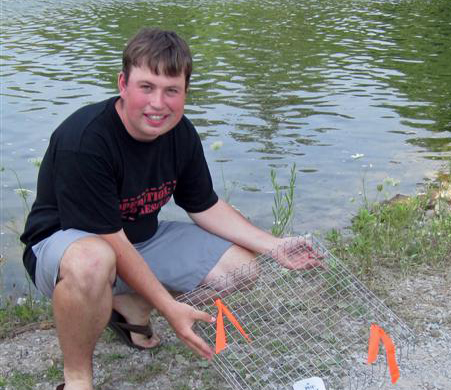As the saying goes; “slow and steady wins the race”- this is not always true when it comes to our reptilian friends living in our local ponds and wetlands. Lately, there’s been a lot of discussion about our local turtles, mainly because the majority of Ontario’s turtle species are listed as being Species At Risk. The Painted turtle is the only exception to this list, so far.
All turtles face numerous obstacles when it comes to reproduction; let alone habitat loss. This includes eggs being eaten by raccoons, skunks or foxes.
In 2010, a few suitable nesting sites were selected along the Trent-Severn Waterway near Washago adjacent to about 185 acres of protected natural habitat; properties managed by the Couchiching Conservancy. With help from a small group of dedicated volunteers, we were able to launch a new pilot program to protect the nesting of turtles, like the snapping turtle. Nesting sites were constructed using a mix of materials; gravel screenings, sand and woodchips (to absorb heat). Turtles tend look for loose, sandy locations that are well-exposed to sunlight- specifically a southern-facing bank. The site must be deep enough for them to dig at least 6-8 inches in order to lay their eggs and are then covered up again by the turtle. Turtles don’t stay to incubate their eggs; once the job is done they will return to their wetland habitat and rely on nature to take its course. Unfortunately there are some flaws in this plan. As mentioned, predators are quick to find the eggs through scent. . Nests that have been eaten by predators will appear as a large mess of scattered eggshells, thus you will not find shells from a successfully hatched nest.
If the eggs do hatch, baby turtles may not be able to survive their journey back to their habitat depending on the location of where they hatched from. This poses a greater risk if located near a roadway.
This new program develops a new form of protecting these eggs. Careful planning went into designing a unique wire mesh cage in order to efficiently protect these nests for the duration of the summer months but also provide a safe environment for the new hatchlings to be released. Each turtle species will lay a different number of eggs. Mature snapping turtles lay the most eggs ranging from 30-60 eggs.
The nesting season typically begins in late May and extends into late June. Blanding’s turtles and painted turtles tend to be most active during the evening hours, particularly on the warm sunny nights, while snapping turtles tend to be most active in the morning hours. Snapping turtle nests are larger and more noticeable above ground in gravel piles, road shoulders or driveways.
This year the project didn’t receive any funding to continue. Volunteers Matt Thomson and Cathie Breckenridge decided to spearhead the project for this season. It was a huge success! We are currently recruiting more volunteers for next year; it’s a great way for students to receive their volunteer hours. We are also encouraging landowners to get involved by protecting turtles on their own properties. For more information contact Matt Thomson by email; matt_thomson@rogers.com.
Sincere thanks to this year’s group of volunteers!
Matt Thomson is a volunteer with the Couchiching Conservancy.

